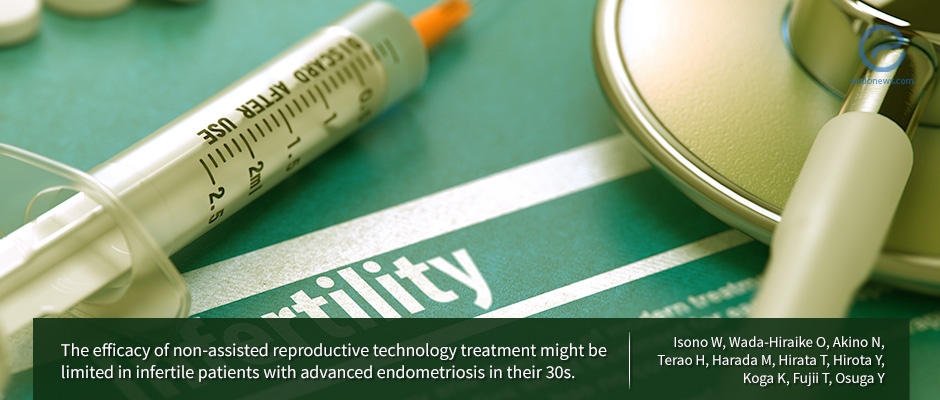Non-assisted reproductive technology treatment: Is it effective in infertile patients with advanced endometriosis?
Oct 23, 2018
Assisted reproductive technology treatment should be preferred in infertile patients aged as young as 30 years with advanced endometriosis.
Key Points
Highlights:
- All infertile patients should be categorized based on their individual risk factors and directed to the optimal treatment in terms of assisted reproductive technology (ART) including those women with advanced endometriosis.
Importance:
- Accurate evaluation and management of infertile patients with advanced endometriosis are essential for the desired cumulative live birth rate even if they are as young as 30 years of age.
What’s done here?
- This retrospective study compares the efficacy of assisted reproductive technology (ART) and non-ART treatment in infertile patients with advanced endometriosis.
- The medical records of 1864 women managed with infertility treatments, assisted or non-assisted methods, from 2000 to 2015 were reviewed. Data was collected from the database records including the history and symptoms associated with endometriosis.
- All patients were categorized into two groups regarding treatment type: non-ART (including controlled ovarian stimulation and intrauterine stimulation) and ART including IVF and ICSI; and only Stages III and IV score were accepted as advanced endometriosis and assessed in this study.
Key results:
- 21.9% of the 1358 patients managed with non-ART treatments and 49.4% of the 894 patients managed with ART treatments gave birth.
- Success in patients treated with non-ART was increased in 12 months, whereas patients treated with ART became pregnant within 6 months.
- Patient age, past treatment history, uterine fibroid, and advanced endometriosis are significant risk factors determining the outcomes of infertility treatment in the non-ART group; age, long infertility period and diminished ovarian reserve were associated with poor results in the ART group.
- The important finding was that the presence of leiomyoma and advanced endometriosis did not change the success of ART treatment.
Limitations
- The retrospective design, the lack of consideration of treatment number and the inability to analyze types of infertility treatments represent the limitations of this study.
Lay Summary
The marriage and childbearing ages delay due to the life-style changes in developed countries. As a result, advanced age becomes a major concern in infertility treatments which consist of non-ART and ART modalities.
Non-ART treatments include mild ovarian stimulation together with timed intercourse and/or intrauterine insemination, whereas ART treatments include in vitro fertilization (IVF) and intracytoplasmic sperm injection (ICSI).
Isono et al, a group of scientists from Tokyo, published a retrospective study titled as “The efficacy of non-assisted reproductive technology treatment might be limited in infertile patients with advanced endometriosis in their 30s” in the journal "The Journal of Obstetrics and Gynecology Research". These authors aimed to evaluate the significant risk factors determining the outcomes of both infertility treatments.
All included patients were classified into two groups based on treatment type. Patient age, past treatment history, uterine fibroid, and advanced endometriosis were accepted as significant risk factors determining the outcomes of infertility treatment in the non-ART group. On the other hand, age, long infertility period and diminished ovarian reserve were associated with poor results in the ART group.
The authors specifically analyzed the association between the presence of advanced endometriosis and the cumulative live birth rate and emphasized that advanced age is an important predictor for infertility treatment success in the ART group, however, the presence of leiomyoma and advanced endometriosis did not change the success of ART treatment.
“Our results may provide infertility patients with accurate information regarding their expected probabilities of achieving a live birth and may help them select the optimal treatment based on their classification according to various risk factors” they added.
Research Source: https://www.ncbi.nlm.nih.gov/pubmed/30280468
advanced endometriosis infertility assisted reproductive technology (ART) non- assisted reproductive technology (non-ART) treatment female age cumulative live birth rate

